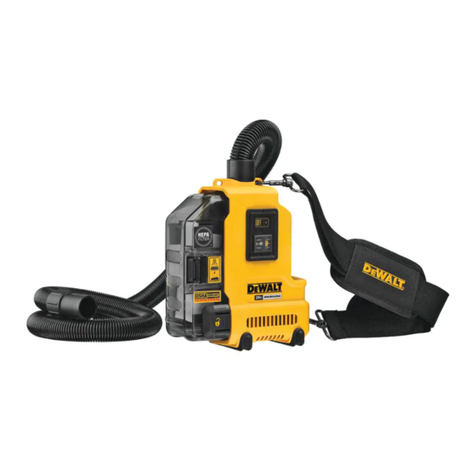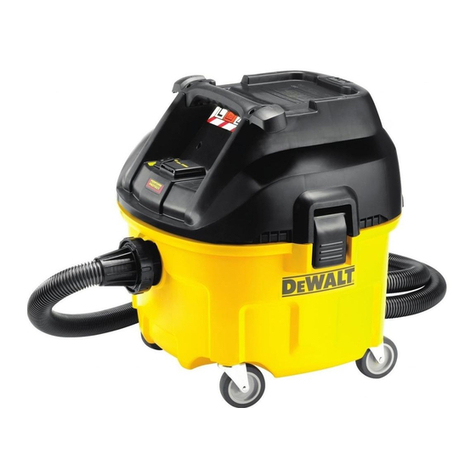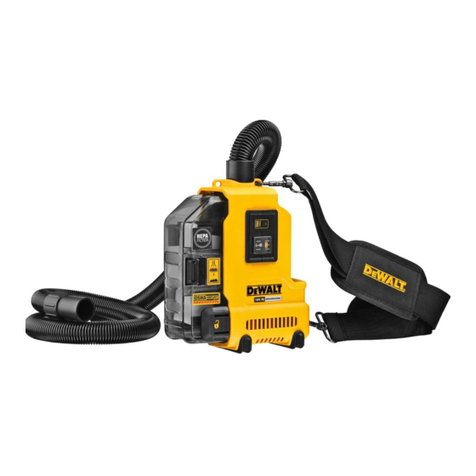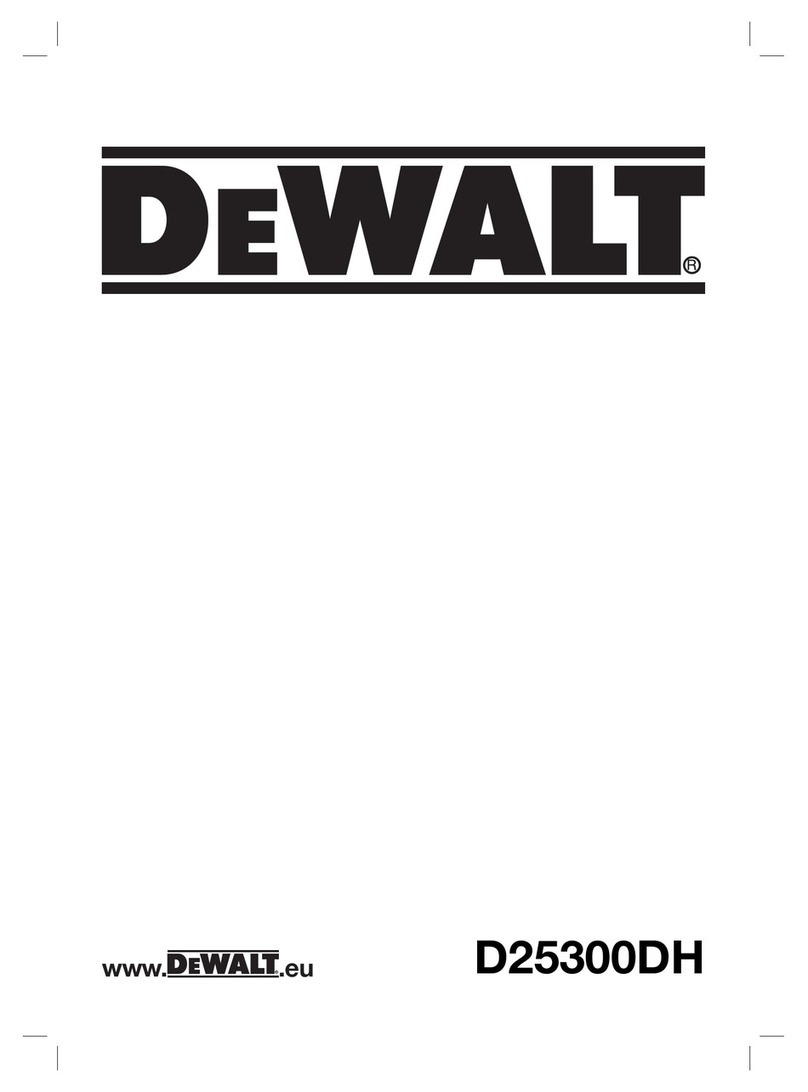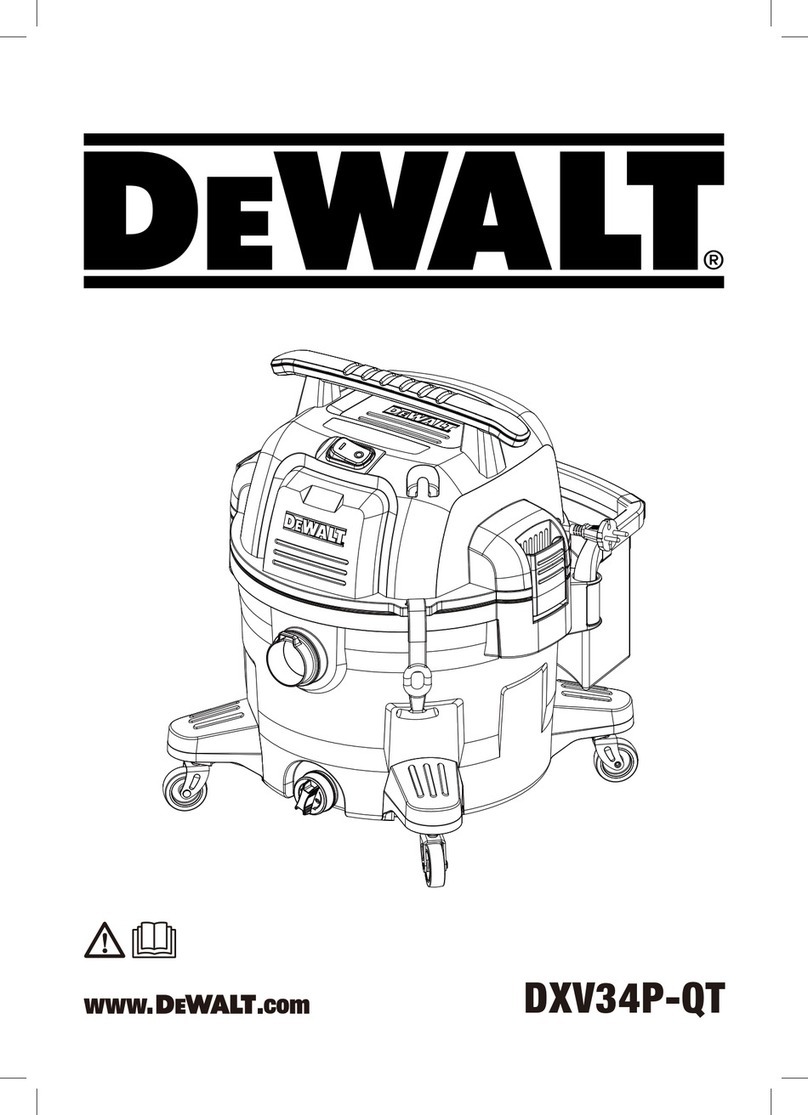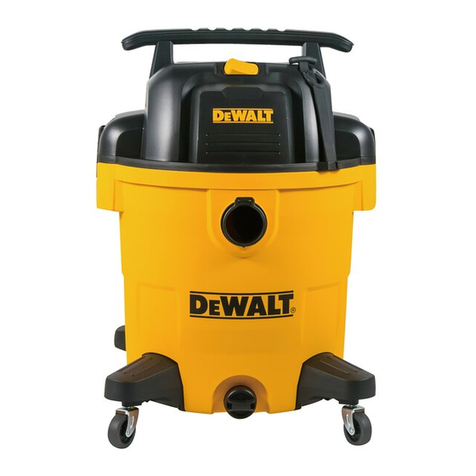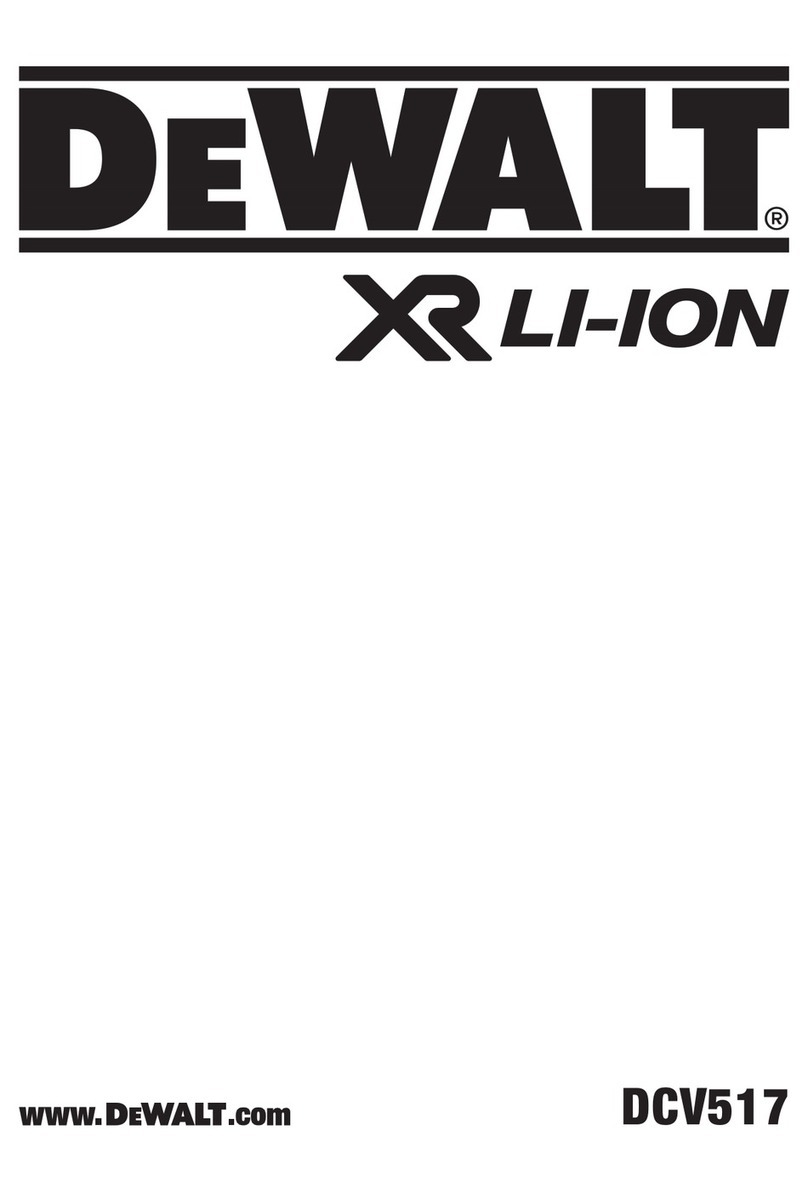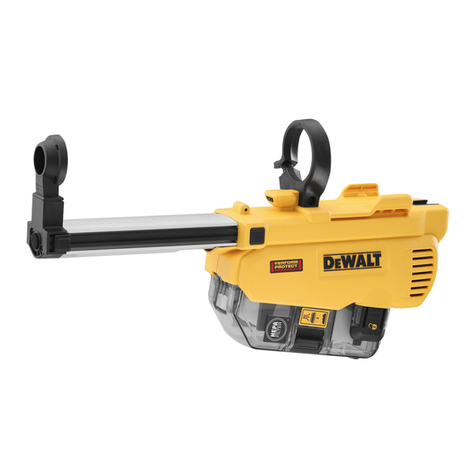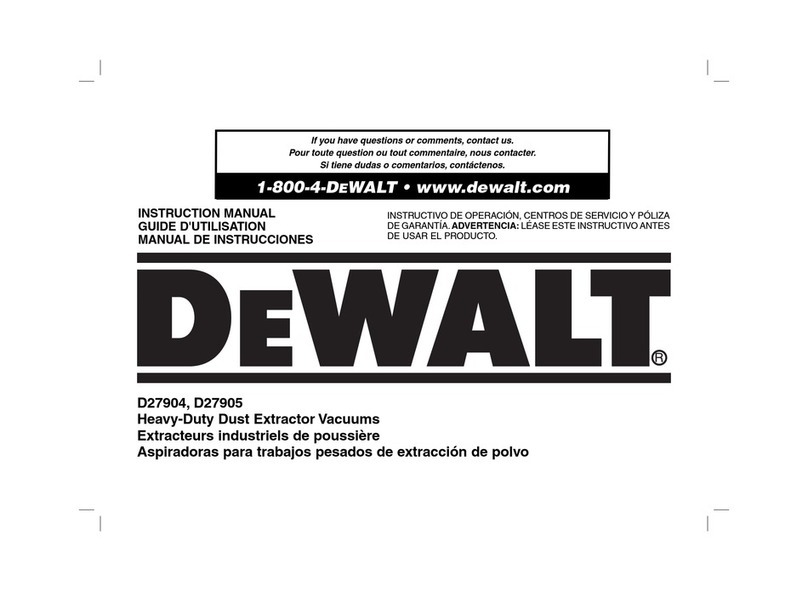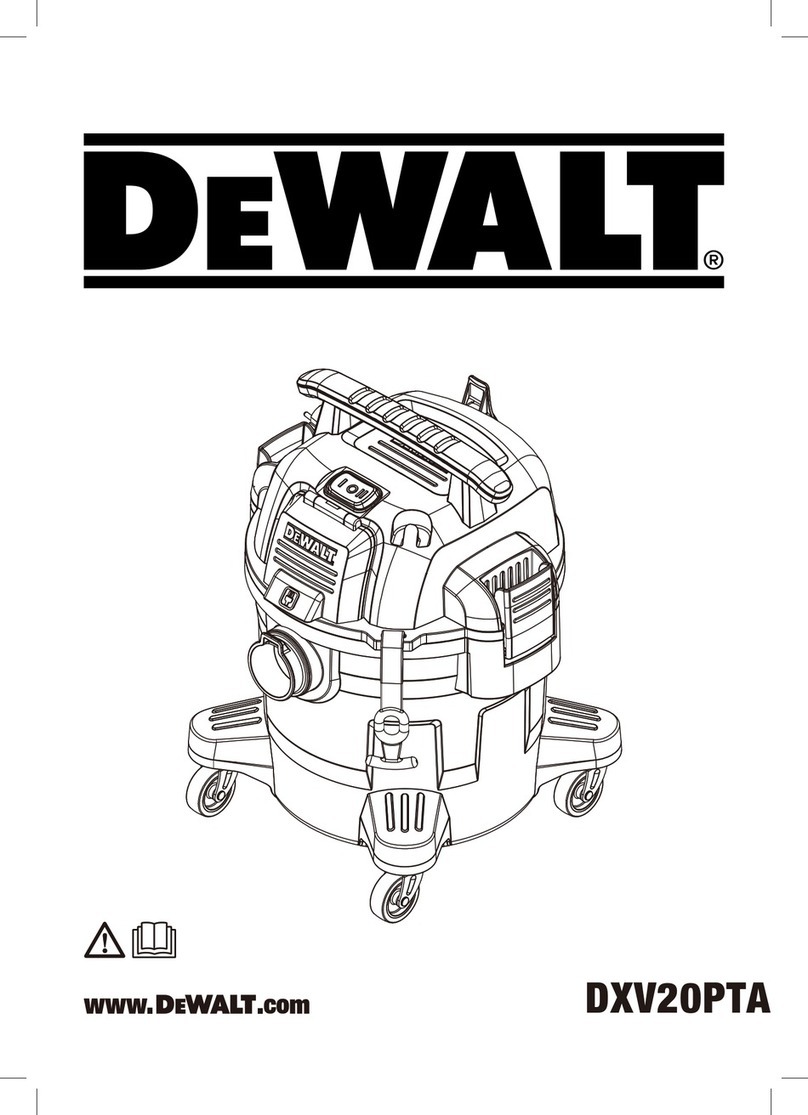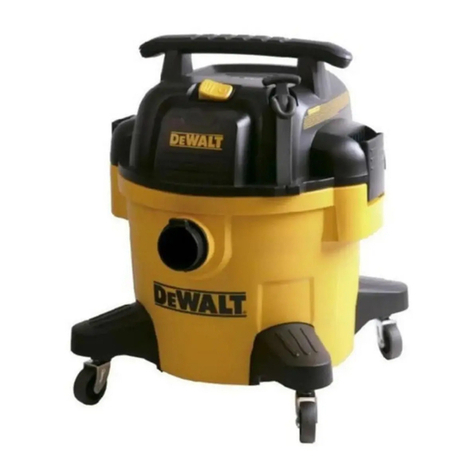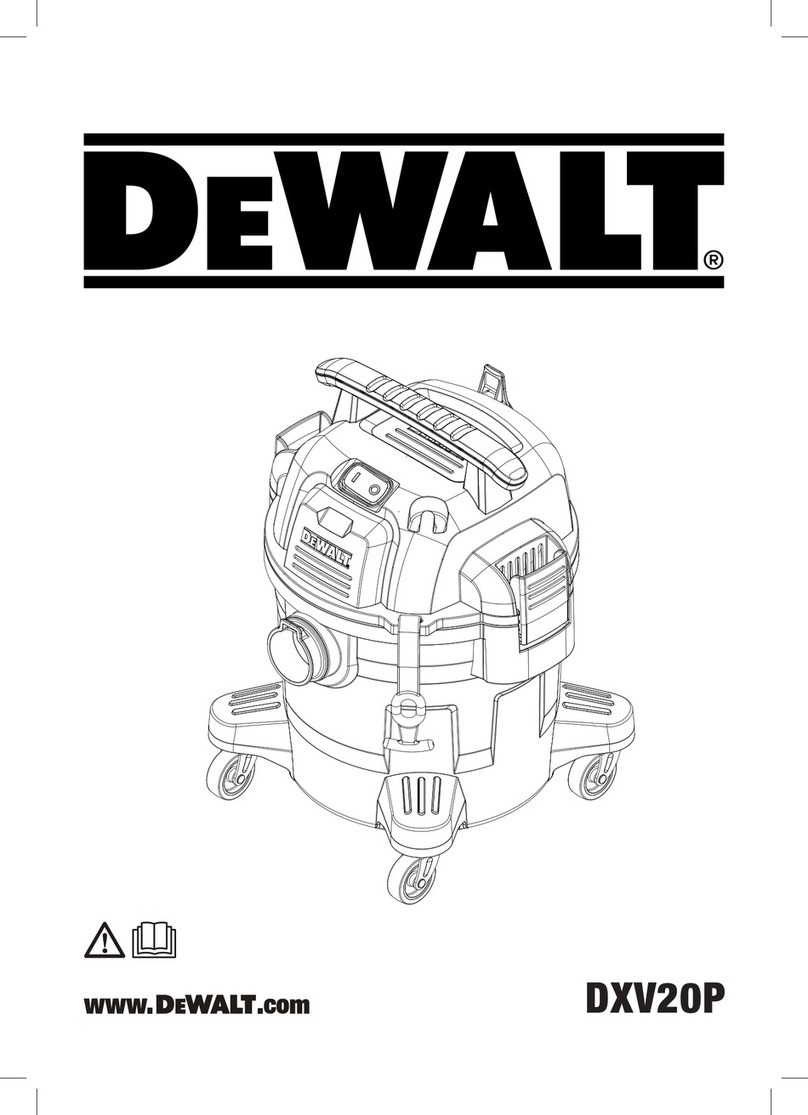
5
ENGLISH
Additional Safety Warnings
a ) Prevent unintentional starting. Ensure the switch is
in the off‑position before picking up or carrying the
appliance. Carrying the appliance with your finger on the
switch or energizing appliance that have the switch on
invitesaccidents.
b ) Disconnect the battery pack from the appliance
before making any adjustments, changing
accessories, or storing appliance. Such preventive
safety measures reduce the risk of starting the
applianceaccidentally.
c ) Recharge only with the charger specified by the
manufacturer. A charger that is suitable for one type
of battery pack may create a risk of fire when used with
another batterypack.
d ) Use appliance only with DEWALT recommended
battery packs. Use of any other battery packs may create
a risk of injury andfire.
e ) When battery pack is not in use, keep it away from
other metal objects, like paper clips, coins, keys,
nails, screws or other small metal objects, that can
make a connection from one terminal to another.
Shorting the battery terminals together may cause burns
or afire.
f ) Under abusive conditions, liquid may be ejected
from the battery; avoid contact. If contact
accidentally occurs, flush with water. If liquid
contacts eyes, additionally seek medical help. Liquid
ejected from the battery may cause irritation orburns.
g ) Do not use a battery pack or appliance that is
damaged or modified. Damaged or modified batteries
may exhibit unpredictable behavior resulting in fire,
explosion or risk ofinjury.
h ) Do not expose a battery pack or appliance to fire or
excessive temperature. Exposure to fire or temperature
above 266°F (130°C) may causeexplosion.
i ) Follow all charging instructions and do not charge
the battery pack or appliance outside of the
temperature range specified in the instructions.
Charging improperly or at temperatures outside of the
specified range may damage the battery and increase the
risk offire.
j) Do not use the vacuum cleaner if dust is blown out of
the ventilation slots. Switch off the vacuum cleaner
and check whether the filter is installed correctly or is
defective. Defective filters must be replacedimmediately.
k ) Have servicing performed by a qualified repair
person using only identical replacement parts. This
will ensure that the safety of the product ismaintained.
• Never pick up explosive liquids (e.g. gasoline, diesel fuel,
heating oil, paint thinner, etc.), acids orsolvents.
• Do not use vacuum without filters inplace.
• Some wood contains preservatives which can be toxic. Take
extra care to prevent inhalation and skin contact when
working with these materials. Request and follow any safety
information available from your materialsupplier.
• Do not place heavy objects on vacuum
SAVE THESE INSTRUCTIONS
abilities; lack of experience, knowledge or skills unless they are
supervised by a person responsible for their safety. Children
should never be left alone with thisproduct.
• Operators should observe any safety regulations appropriate
to the materials beinghandled.
• Do not leave the appliance when it is connected to a
power source. Remove battery pack when not in use and
beforeservicing.
• To avoid spontaneous combustion, empty tank contents after
eachuse.
• Static shocks are possible in dry areas or when the relative
humidity of the air is low. This is only temporary and does not
affect the use of thevacuum.
• Turn off all the vacuum cleaner before removing the
batterypack.
• Shock Hazard. To protect against risk of electrical shock, do
not put charging base in water or otherliquid.
• Do not allow to be used as a toy. Close attention is necessary
when used by or nearchildren.
• Use only as described in this manual. Use only manufacturer’s
recommendedattachments.
• If appliance is not working as it should, has been dropped,
damaged, left outdoors, or dropped into water, return it to a
servicecenter.
• Do not handle charger, including charger plug, and charger
terminals with wethands.
• Keep hair, loose clothing, fingers, and all parts of body away
from openings and movingparts.
• Use extra care when cleaning onstairs.
• Do not use without filters inplace.
• Do not charge the unitoutdoors.
• Do not incinerate the appliance even if it is severely damaged.
The batteries can explode in afire.
• This appliance is intended for vacuuming everyday and jobsite
dry messes. The unit should be placed or mounted away from
sinks and hotsurfaces.
• Plug the charger directly into an electricaloutlet.
• Use the charger only in a standard electricaloutlet.
• Unplug the charger from outlet before any routine cleaning
ormaintenance.
• Do not look into the air vents when the unit is switched on, as
sometimes there is a possibility of small debris being discharged
from the air vents, especially after cleaning / replacement of the
filters as debris inside the unit can bedisturbed.
Additional Safety Rules
• Do not pick up anything that is burning or smoking, such as
cigarettes, matches or hotashes.
• Do not submerge the tool inwater.
• Do not use to vacuum combustible explosive materials, such
as coal, grain or other finely divided combustiblematerial.
• For dust extractors it is necessary toprovide for an adequate
air changerate L in the room if the exhaust air isreturned to the
room. Reference to National Regulations isnecessary.
• Do not use to vacuum hazardous, toxic or carcinogenic
materials, such as asbestos orpesticide.
